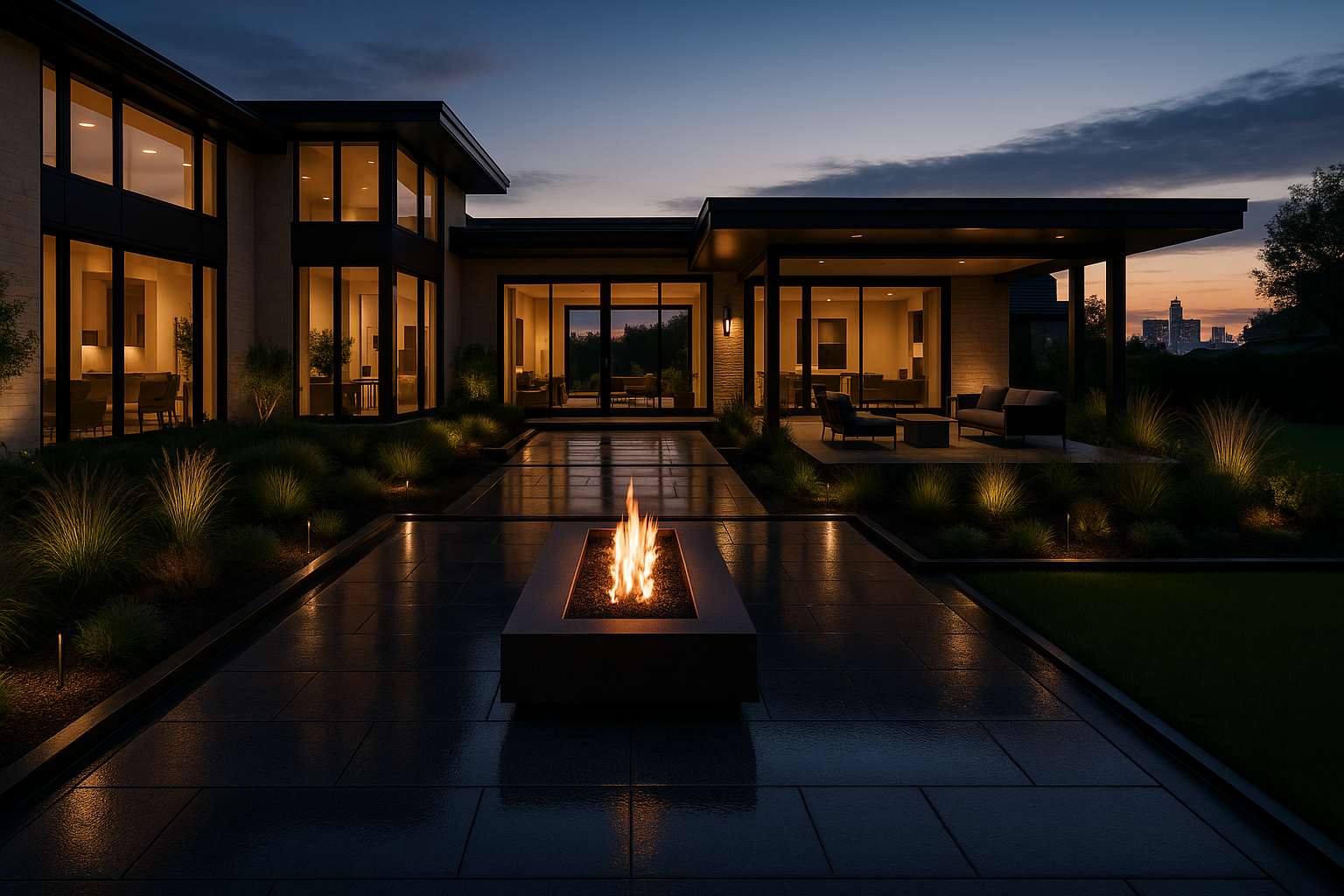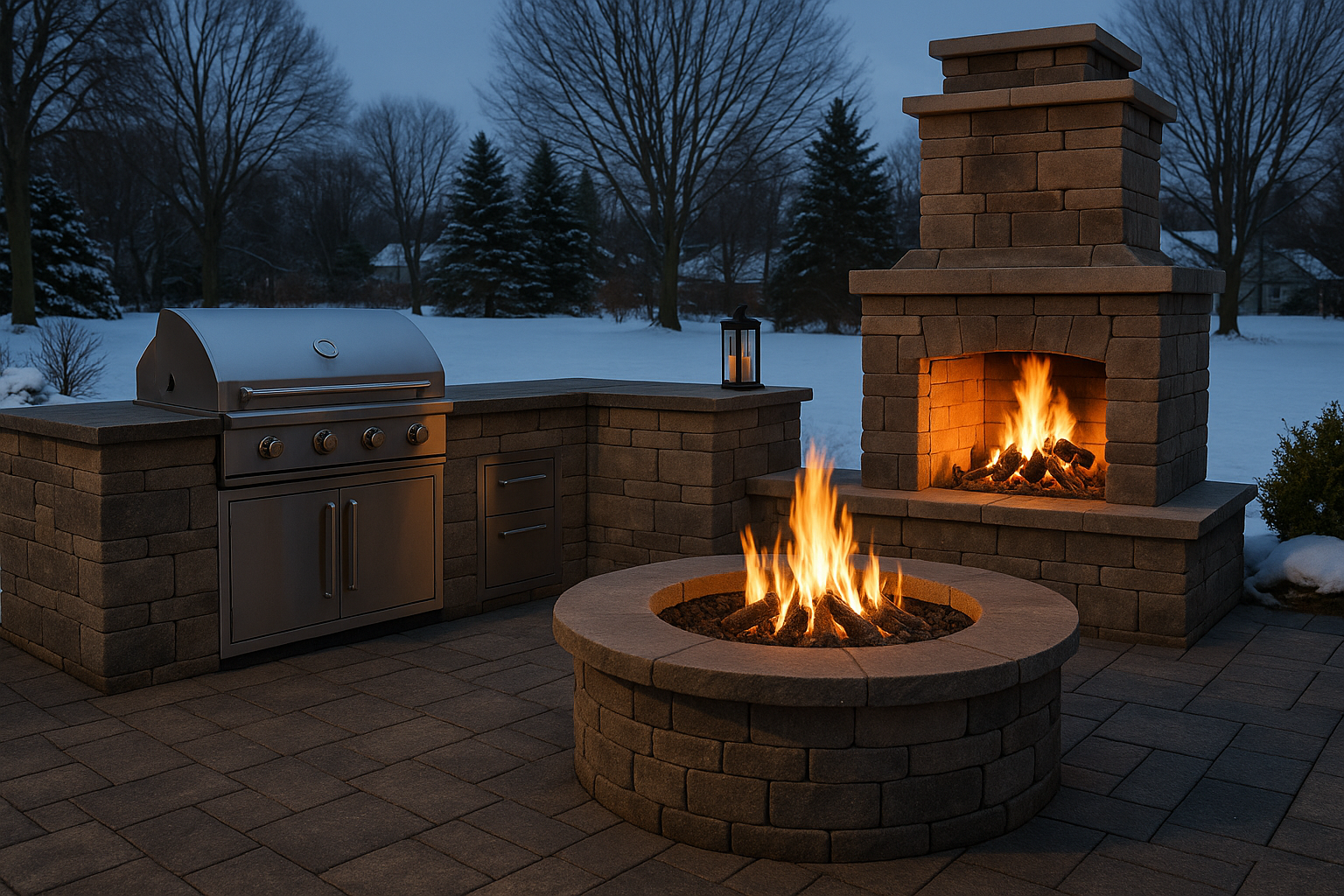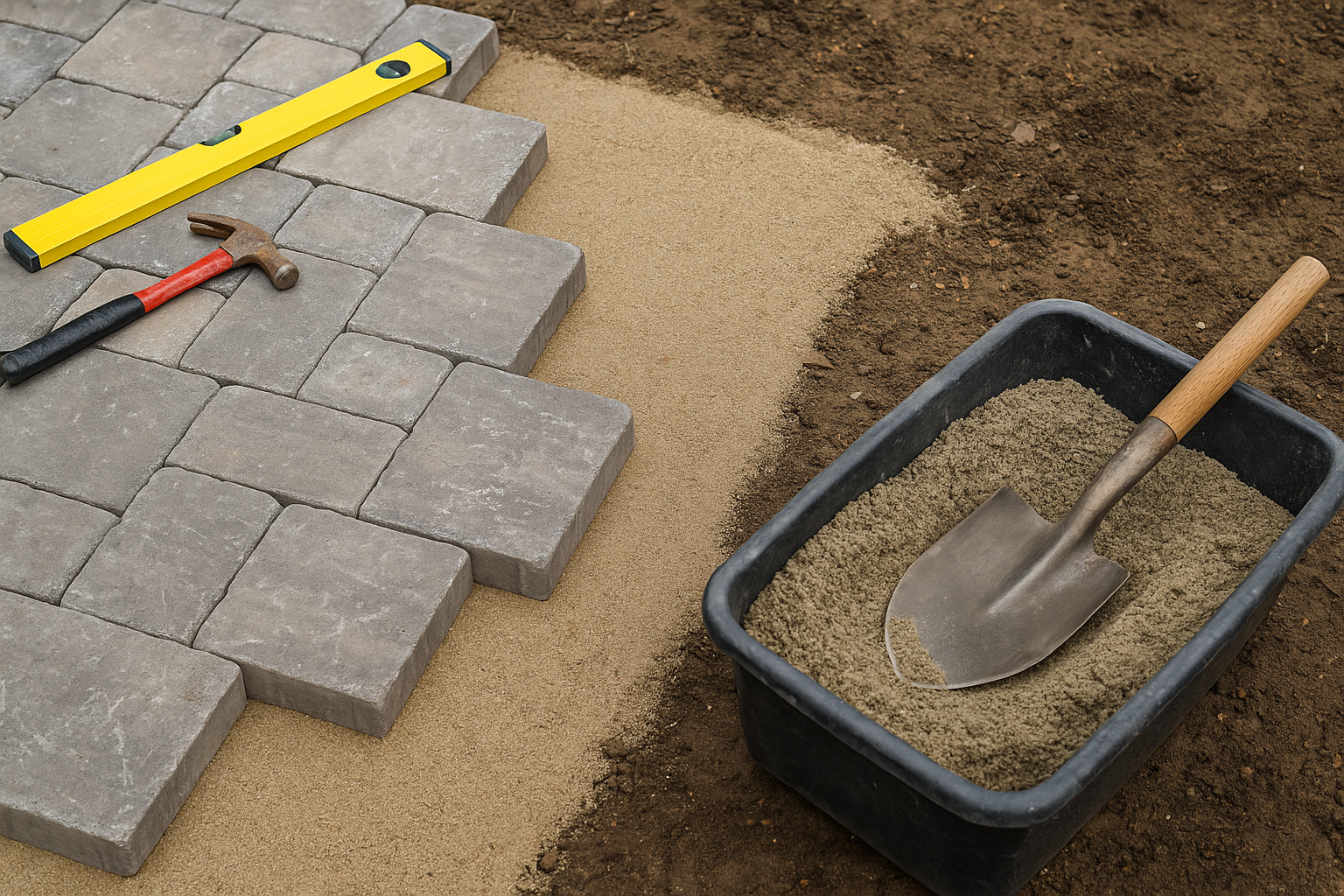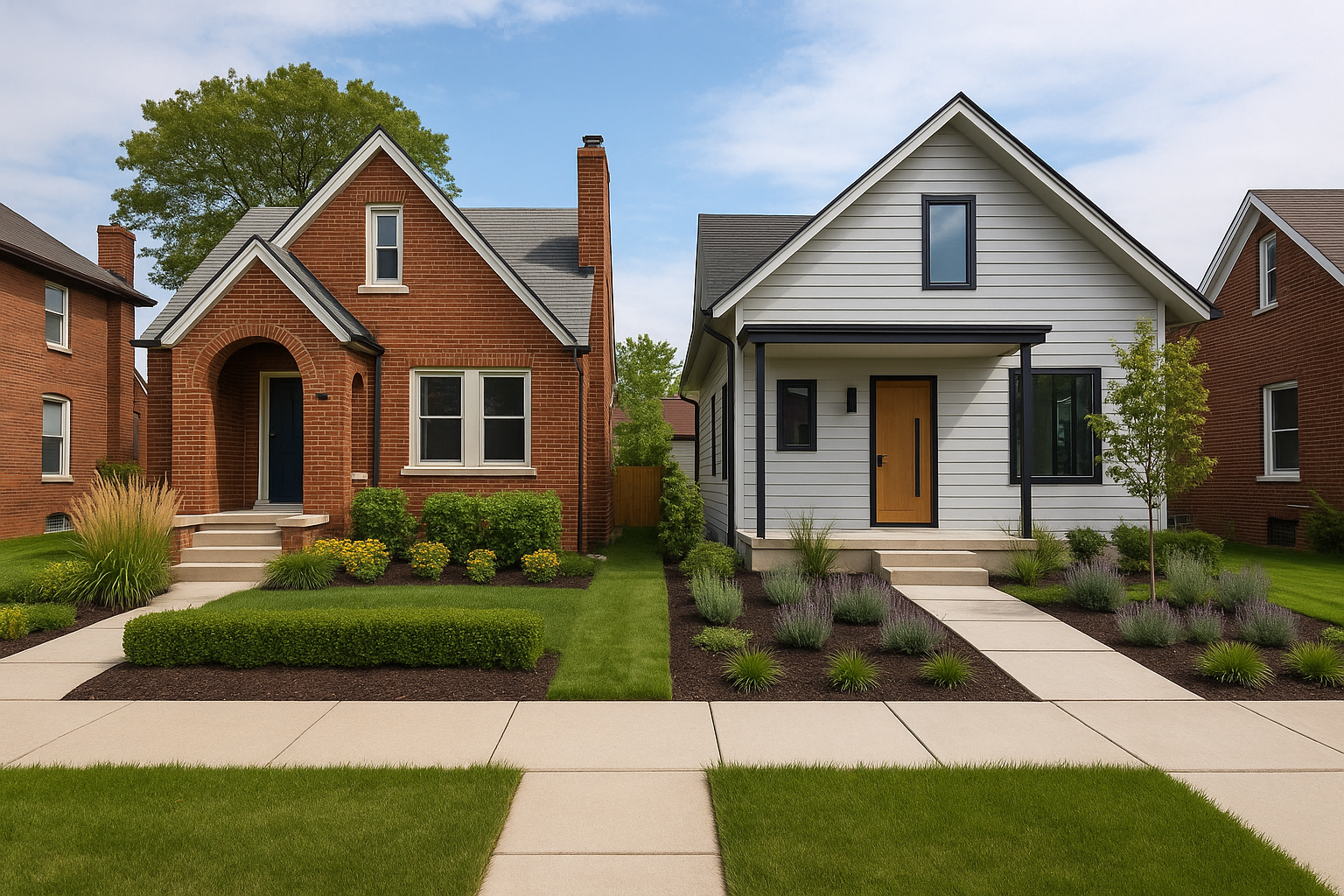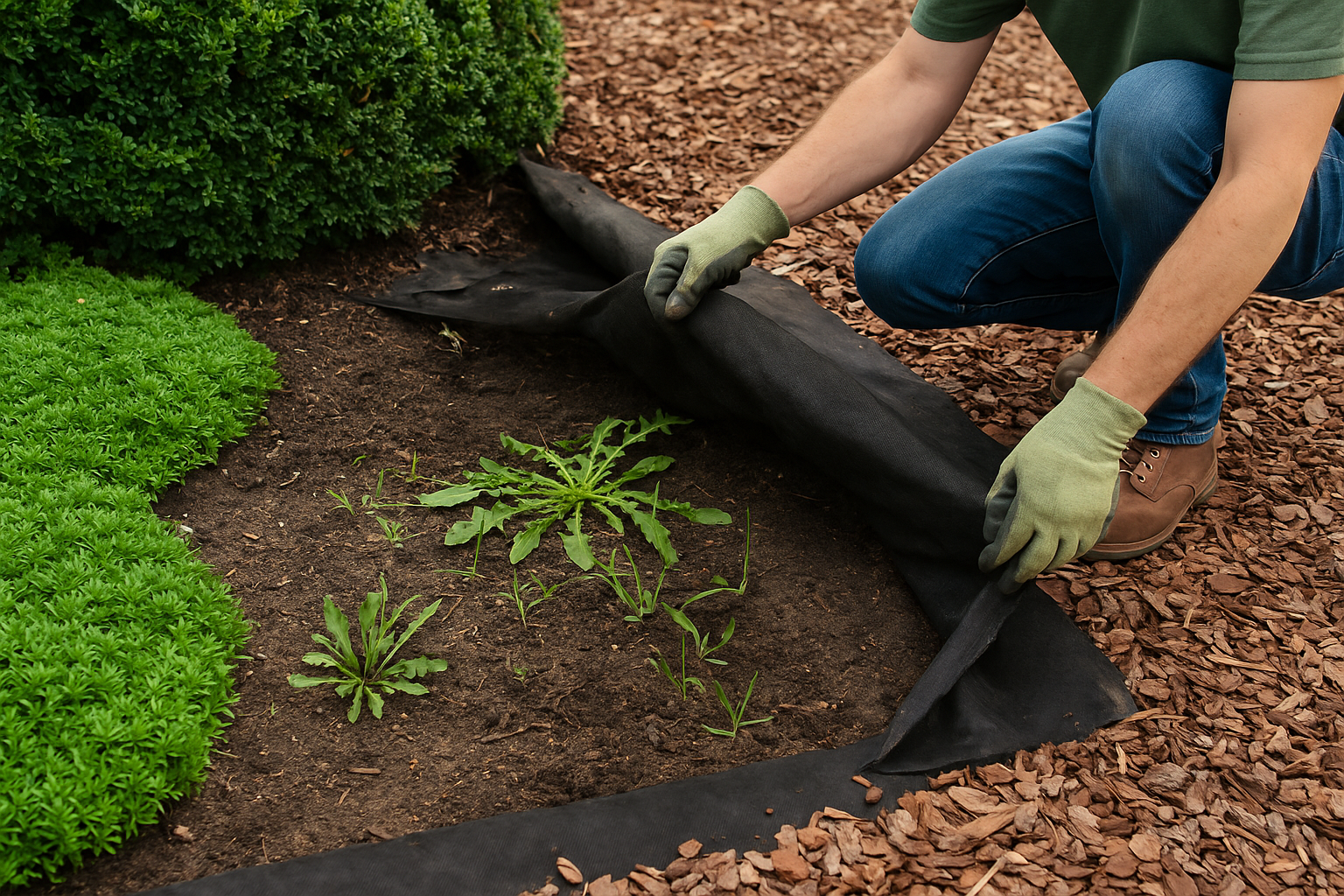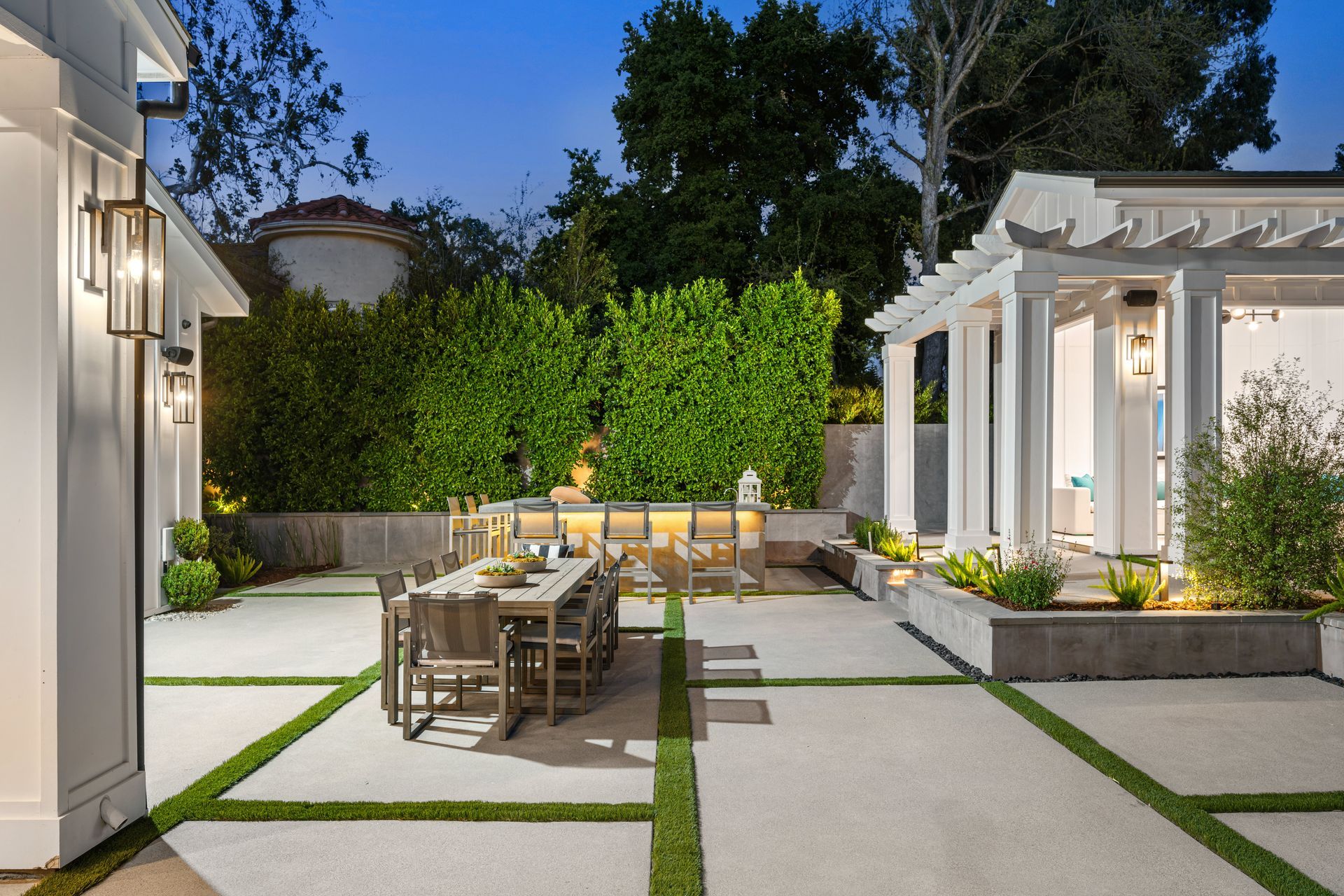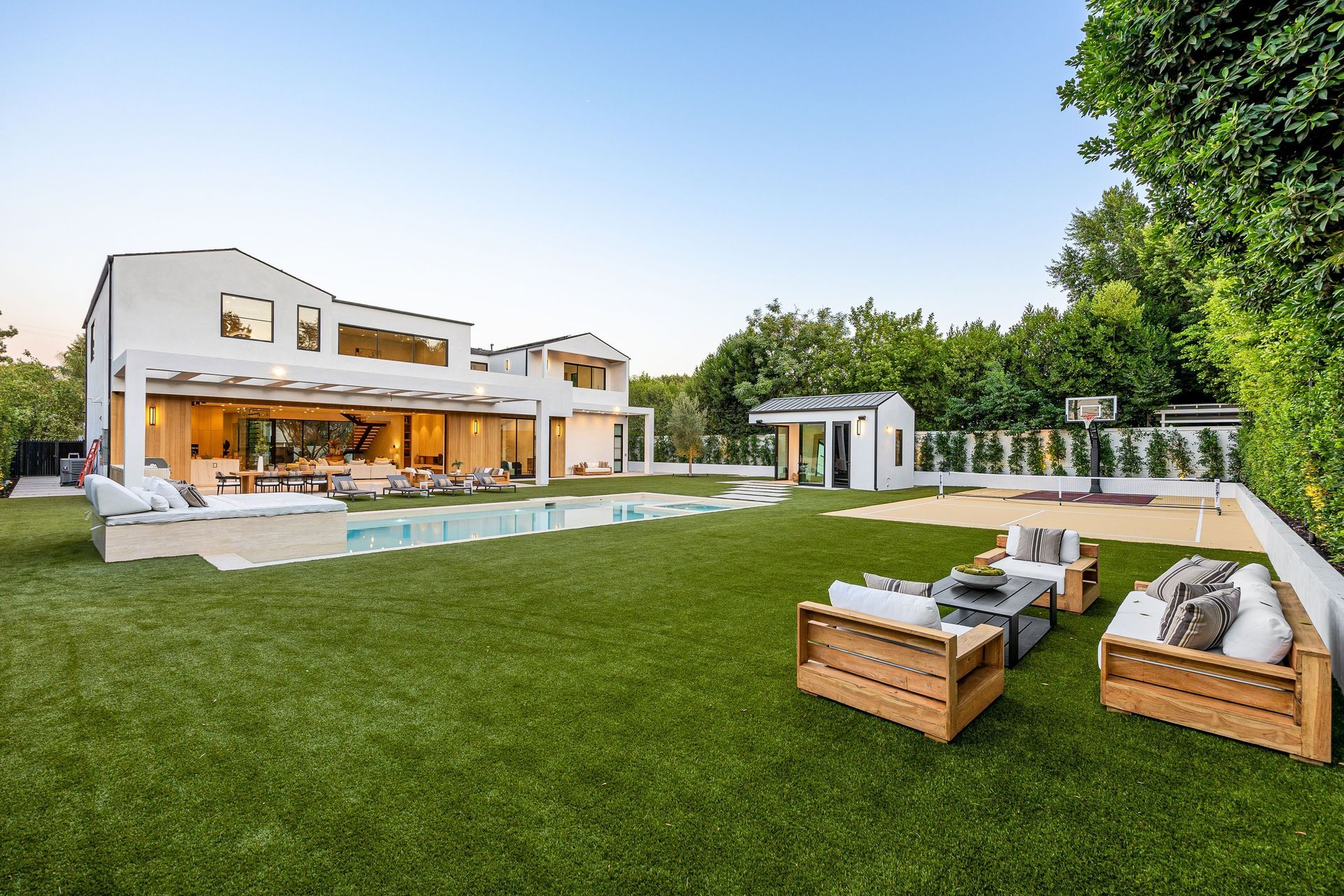Landscaping 101 for New Detroit Homeowners: Budget-Friendly Yard Transformation Tips
Landscaping 101 for New Detroit Homeowners: Budget-Friendly Yard Transformation Tips
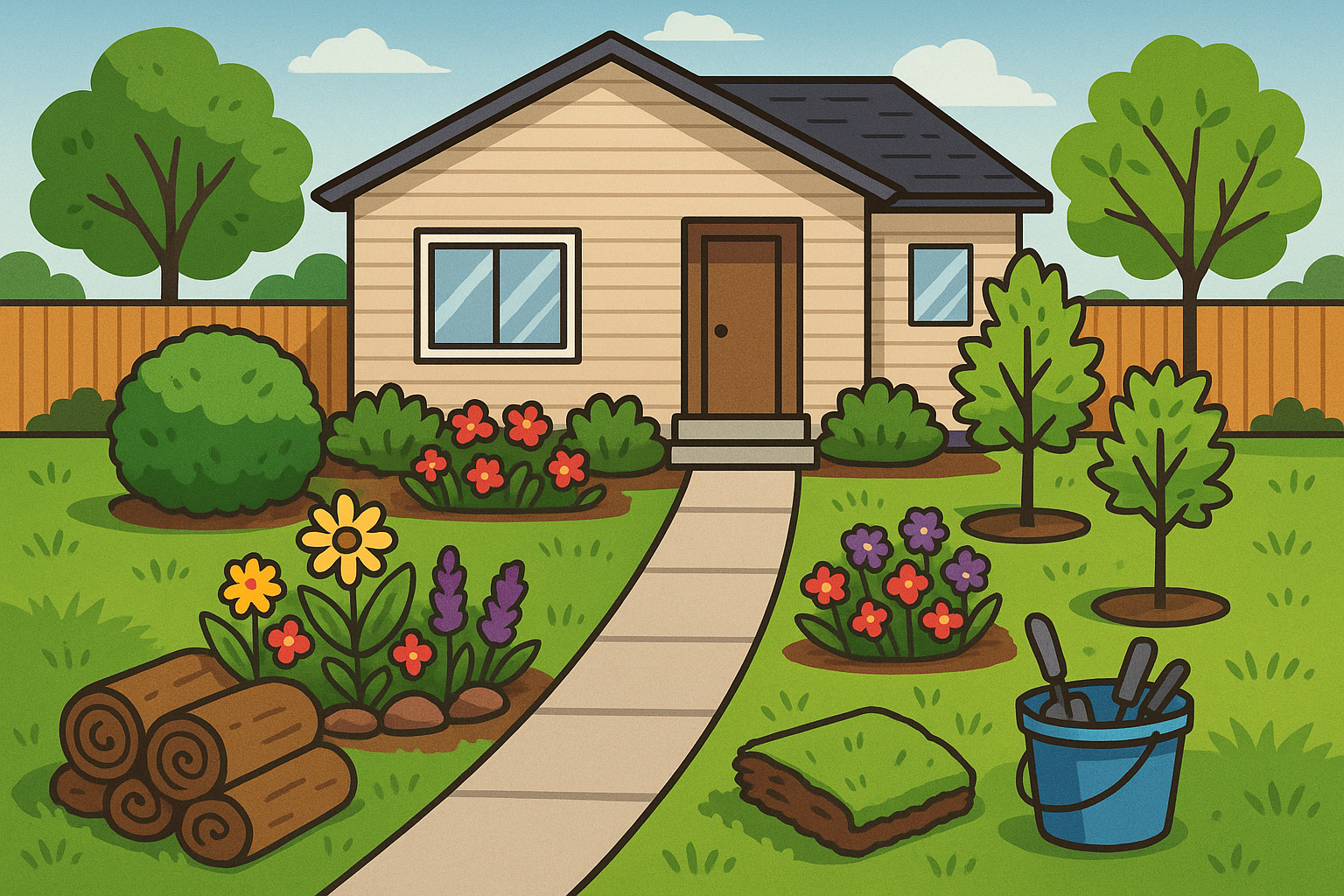
New keys, new yard… and a long punch list. If you’re staring at patchy turf, soggy corners, and beds full of mystery shrubs, you’re not alone. The good news: a true backyard transformation in Metro Detroit doesn’t require a luxury budget—just a clear sequence, Detroit-smart plant choices, and a few professional tricks that prevent rework.
Detroit First: What Makes Our Yards Different (and How to Use That to Your Advantage)
Detroit and its close suburbs sit in USDA Zone 6b. Translation: real winters, humid summers, and the freeze–thaw cycle that exposes shortcuts. Many neighborhoods ride on clay-rich subsoils that compact easily and hold water—great for puddles, terrible for roots. Add de-icing salt near sidewalks and drives, and you’ve got unique pressures that generic national advice misses.
What this means for you:
- Water management is step one—not an afterthought.
- Soil improvement compounds over time; it lowers maintenance and boosts plant survival.
- Seasonal timing matters. Do the right task in the right window, and you cut the effort in half.
- Design cohesion saves money. One good concept prevents five “oops” projects.
If you’re comparing landscaping companies detroit or doing the work yourself, the winning formula is the same: fix water, rebuild soil, plant structure, then layer comfort and personality.
Detroit’s most beautiful yards aren’t the most expensive—they’re the most well-sequenced.
The 3-Phase Plan: From “Overwhelmed” to “On It”
Think of your yard as a system. Your first goal isn’t flowers or furniture; it’s flow and stability. Once that foundation is right, everything else lasts longer and looks better.
Phase 1 — Stabilize (Water, Soil, Safety)
- Map where water actually goes after a storm.
- Extend downspouts, fix grading at foundations, and cut subtle swales to safe outlets.
- Top-dress compacted areas with compost and aerate when the soil is workable (not wet).
- Make entries safe: add non-slip surfaces or temporary mats for winter freeze events.
Phase 2 — Structure (Bones You’ll Love in January)
- Plant evergreen anchors and small trees that hold the space when leaves drop.
- Establish bed lines with clean steel or paver edging; messy edges make everything feel unfinished.
- Add a modest, durable patio or seating pad so you actually use the yard.
Phase 3 — Finish (Color, Comfort, Personality)
- Fill with shrubs and perennials that thrive in Zone 6b and tolerate salt near hardscape.
- Add low-glare lighting for early sunsets and safe steps.
- Introduce one “wow” that isn’t pricey—e.g., a tidy gravel lounge, a sculptural urn, or a compact fire feature.
Numbered Steps: Your Detroit Yard Makeover, Start to Finish
- Audit water and utilities. Walk after a rain, note puddles and downspout discharge; call to mark underground lines before digging.
- Correct grading. Re-establish a gentle pitch away from the house. Cut swales where water lacks an escape route.
- Rebuild soil. Top-dress lawn with compost in fall; blend compost into new beds, never tilling clay when wet.
- Edge and define. Install steel or paver edging; keep curves gentle and intentional.
- Create a simple seating pad. A compact gravel or paver zone near the kitchen door often sees the most use.
- Plant in layers. Evergreens first, then shrubs, then perennials, then groundcovers that act as living mulch.
- Mulch smart. 2–3 inches of shredded hardwood; keep off plant crowns and tree trunks.
- Light the paths. Low, warm fixtures on steps and key turns; avoid glare into windows.
- Set a seasonal cadence. Spring cutback and compost; summer edits; fall planting and lawn work.
High-Impact, Budget-Friendly Upgrades (That Don’t Look Budget)
1) Clean edges + fresh mulch
A crisp edge along beds and 2–3 inches of shredded hardwood transforms curb appeal in a day. It’s the fastest, highest-return move for new owners.
2) A “starter patio” you can expand
Use compacted gravel with a tidy paver border. It drains, costs less than a full slab, and can be upsized later.
3) Salt-aware planting at edges
Near walks and drives, choose shrubs and perennials with tolerance for salt spray and splash—protects your investment and keeps winter damage from ruining spring.
4) A micro-screen
A pair of columnar trees and a layered understory can screen a neighbor’s window without building a wall.
5) Night lighting that disappears
Skip floodlights. Use low wattage, warm color temperature, and shielded fixtures that graze steps and stone—more safety, more luxury, less glare.
The Detroit Lawn: Patchy Today, Better by Fall
If your lawn is weedy and thin, think systems—not quick fixes. In our region, late summer to early fall is the prime window for reseeding. Here’s a simple arc:
- Spring: Aerate only if soil is workable. Top-dress small areas with compost. Keep mowing sharp and higher than you think (3–3.5").
- Late Summer–Early Fall: Overseed, top-dress, and water deeply, not daily.
- Year-round: Address the shade problem (raise canopies or shift to shade-tolerant groundcovers) rather than fighting it with turf.
When you’re ready to fold lawn work into a broader plan, browse ourblog hub for seasonal how-tos and local inspiration.
DIY vs. Pro: Where to Draw the Line Without Wasting Money
DIY wins: Edging, mulch refresh, small gravel patios, perennial planting, container accents.
Pro wins: Drainage that ties to legal outlets, regrading near foundations, large tree placement, retaining walls, complex paver systems.
If hardscape is part of your plan, keep it durable and Detroit-smart by coordinating through our Hardscape Design & Installation team. For whole-property plant design and bed rebuilding, see Residential Landscaping.
Real-World Budget Examples (So Expectations Match Reality)
- Weekend makeover ($300–$800): Edge beds, mulch, add three foundation shrubs, one focal planter, and string lights on the terrace.
- Starter lounge ($1,200–$3,500): 12' x 12' gravel pad with paver border, two chairs + fire bowl, four path lights, six shrubs, and a groundcover flat.
- Phase-one infrastructure ($3,500–$8,000+): Downspout reroutes, swales, compost/topsoil for lawn repair, core planting (evergreens + shrubs), lighting transformer + starter runs.
Numbers vary by access, material, and scope—but phasing the work preserves cash while momentum (and enjoyment) stays high.
Q&A: New Detroit Homeowners Ask…
When is the best time to plant shrubs and perennials in Detroit?
Spring and early fall. Cool temperatures and regular moisture help roots establish before heat or deep cold.
Can I keep turf where it’s shady?
Sometimes, with raised canopies and a tolerant mix. But groundcovers or gravel under trees often look better and require less water.
Do I need a permit for a small patio?
Many small surface projects are simple, but walls over certain heights or structural changes may trigger review. When in doubt, check with your local building department early.
How do I stop weeds without fabric?
Build soil, plant densely, and maintain a 2–3" mulch layer. Fabric starves soil life and fails as a barrier in planted beds.
A Warren, MI Mini Case: From “Weeds and Water” to “Dinner Outside Tonight”
A young family in Warren bought a home with a backyard that turned into a marsh after storms. Beds were ringed with plastic edging and fabric, and the “patio” was a mix of slabs that trapped water against the house. They wanted to host friends on a realistic budget.
Constraints
- Clay subsoil + downspouts ending at the foundation
- Tight budget with hopes to add a permanent terrace later
- Need for fast improvement before their first fall in the home
Moves We Made
- Re-pitched soil away from the house and cut a shallow swale to a side yard outlet
- Extended downspouts under a new gravel path to daylight
- Removed fabric, rebuilt bed soil with compost, and installed a crisp steel edge
- Added a 12' x 14' compacted gravel lounge with a paver soldier course border
- Planted salt-aware shrubs by the driveway and layered groundcovers that act like living mulch
- Set four warm, low-glare path lights for safe, early-evening use
Outcome
Within two weekends of work and a modest material budget, they had a dry, usable lounge and clean curb appeal. The plan leaves room to upgrade to full pavers later without tearing out the edges or redoing drainage—smart sequencing that saves money. (Searchers looking for
landscape warren mi ideas or vetted
landscapers warren mi learn quickly that water + soil come first.)
Detroit-Savvy Planting Shortlist (Low Maintenance, High Payoff)
- Evergreen anchors: Boxwood (protected sites), juniper cultivars, dwarf conifers for structure
- Flowering shrubs: Hydrangea (varieties suited to your sun/soil), serviceberry, ninebark
- Perennials: Catmint, salvia, hardy geranium, hosta for shaded edges
- Groundcovers: Pachysandra, ajuga, creeping thyme (by sunny paths), lamium in high shade
- Accent trees: Columnar beech or hornbeam for narrow screens; small ornamental cherries or crabapples for spring pop
Right plant, right place. In Detroit, that also means “right plant, right salt exposure.”
Lighting That Makes Detroit Nights Feel Longer (In a Good Way)
Our winter sunsets come early. Layered, warm lighting lets you enjoy the yard after work without harsh glare.
- Path/step lights: Safety first. Keep fixtures out of shovel paths and plow arcs.
- Cap lights: Under seat-wall caps for subtle edges.
- Tree accents: Soft uplights on one or two specimen trees; restraint = luxury.
- Scenes: “Welcome” (low, warm), “Entertaining” (brighter on terrace), “Late” (security with minimal spill).
If you’re adding hardscape soon, pre-sleeve for cables so you don’t pay twice.
Budget-Smart Hardscape Tips (So You Don’t Redo It Next Year)
- Start with a compacted gravel pad bordered by pavers; it’s cost-efficient and drain-friendly.
- Keep patterns quiet—field + single border—so the space reads calm and upscale.
- Pitch surfaces 1–2% away from the house; route downspouts under, not across, the patio.
- Use materials rated for freeze–thaw; rushing cure on jointing is a classic callback.
When you’re ready for a permanent terrace or walk, align specs with pros who design for Detroit winters via Hardscape Design & Installation.
Compact Checklist: New-Owner Wins in the First 90 Days
- Regrade soggy spots; extend downspouts to daylight.
- Top-dress lawn/bed areas with compost; don’t till clay when wet.
- Edge all beds; refresh with 2–3" shredded hardwood mulch.
- Plant evergreen anchors; add 5–7 durable shrubs before chasing perennials.
- Build a small seating pad you’ll actually use.
- Add four low-glare path/step lights.
- Photograph the site and your subsurface fixes for future reference.
- Set a seasonal routine: spring cutback, summer edits, fall planting.
Mini Glossary
Top-dress — Spread a thin layer (compost/soil) on lawn or beds to feed soil and level minor low spots.
Swale — A shallow, graded channel that quietly moves water to a safe outlet.
Compaction — Pressing soil or aggregate until it’s dense and stable; necessary for durable hardscape.
Freeze–thaw — Expansion of water as it freezes, then contraction as it thaws; it lifts weak patios and opens joints.
Living mulch — Groundcovers that shade soil and suppress weeds while feeding the ecosystem.
Soldier course — A border of pavers set perpendicular to the field to frame an edge.
Daylight (drainage) — Where a pipe exits to the open air and water can flow freely.
Zone 6b — Detroit’s plant hardiness zone; guides what survives winter and when to plant.
Local Partners and Proof: Why Picking the Right Team Matters
Search results for landscaping companies in detroit can feel endless. Look beyond ads. A reliable short list of detroit landscaping companies will show:
- Before/after photos across seasons (especially winter performance).
- Drawings or specs that call out base depth, edging, drainage, and plant sizes.
- A service plan (year-one tune-ups, mulch refresh, lighting aim checks).
- Clear communication on timing around Detroit’s weather patterns.
As you compare landscape companies detroit, ask for a sample plan set and references on projects with similar constraints. A seasoned detroit landscaping company won’t flinch; they’ll welcome the conversation.
If you’re new to the scene and want a single partner who can coordinate soil work, planting, and hardscape, look to a greater detroit landscape company with end-to-end delivery. The right greater detroit landscape team designs for clay soils, snow operations, and salt exposure from day one—so you aren’t paying twice.
For project ideas and seasonal guidance, keep an eye on our blog hub. When you’re ready to move from list-making to building, our Residential Landscaping page shows how we tie grading, planting, lighting, and maintenance into one clean sequence.
Closing Statement
A Detroit yard becomes effortless when you treat it like a system: manage water, build soil, plant structure, then layer the moments that make home feel special. Start small, phase smart, and align projects to the seasons that favor success. Whether you DIY a weekend lounge or commission a master plan, momentum matters more than perfection on day one—and the right partner turns momentum into a yard that gets better every year.
Request a custom design from Rohto Landscaping

